When it comes to the success of any organization, there’s one crucial phase that lays the groundwork for future employee engagement, productivity, and retention: onboarding. Effective onboarding can make the difference between a new hire thriving in their role or leaving the company within a few months. So, what are the essential ingredients for a seamless onboarding experience?
This blog post delves into the elements that can transform a standard onboarding process into a professional, welcoming, and effective introduction to your organization.
The Importance of Onboarding
Before we dive into the core components of a robust onboarding program, it’s important to understand why effective onboarding matters. Statistics show that organizations with a strong onboarding process improve new hire retention by 82% and boost productivity by over 70%.
A well-structured onboarding program helps new employees acclimate to the company culture, understand their role within the team, and forge essential relationships. Ultimately, it sets the stage for the employee’s long-term success and satisfaction.
Essential Ingredients for Seamless Onboarding
Pre-boarding Preparation
Onboarding doesn’t start on the first day; it begins with pre-boarding. This phase encompasses the steps taken after the offer is accepted and before the new hire starts their role. Sending an email welcoming the new employee, providing them with essential information about their first day, and sharing your company culture through videos or readings can help build excitement and reduce anxiety. Consider assigning a “buddy” or mentor to help the new employee during this transitional time, providing them with a familiar point of contact.
Structured Orientation Program
A well-organized orientation program is the cornerstone of onboarding. This program should cover key topics such as company history, mission, values, policies, and procedures. Involve multiple departments to give new hires a rounded view of the organization. Engaging presentations, guest speakers, and interactive Q&A sessions can create an inviting atmosphere for new employees. Keep in mind that the orientation should extend beyond just the “need-to-know” information; it should also incorporate training on tools, systems, and any platforms they will be using daily.
Clear Role Expectations
Setting clear expectations from the outset is vital for new hires. Discuss the specific responsibilities of the new role, including immediate tasks to be completed in their first few weeks. Additionally, ensure that they understand key performance indicators (KPIs) and how they will be evaluated. By providing a transparent outline of what success looks like, new employees can align their efforts with the organization’s objectives and feel more empowered.
Comprehensive Training Programs
Training is critical for new hires to gain proficiency in their roles. Depending on the complexity of the job, consider creating role-specific training programs tailored to different learning styles. This may include hands-on training, e-learning modules, shadowing opportunities with experienced colleagues, and ongoing mentorship. Assess knowledge retention through quizzes or follow-up sessions. Regular check-ins can gauge the employee’s progress and ensure they feel supported.
Buddy Systems and Mentorship
Pairing new hires with a buddy or mentor can significantly ease their transition into the organization. Buddies can serve as go-to resources for answering questions about company culture, helping navigate the workplace, and fostering informal social connections. Mentorship programs can take this approach a step further by providing structured guidance to new employees as they grow in their roles. A mentor can help navigate organizational dynamics and career development opportunities.
Regular Feedback and Check-ins
Feedback is crucial during the onboarding process. Schedule regular check-ins within the first few months to assess how new employees are settling in. These conversations should be two-sided; encourage new hires to share their experiences, voice concerns, and identify any areas for improvement. By making feedback an integral part of onboarding, companies can make real-time adjustments to improve the process for future hires.
Cultural Integration
Fostering a sense of belonging is essential for new employees. Encourage participation in team-building activities and social events, and highlight the company culture through informal gatherings, lunch-and-learns, and community outreach initiatives. Make it easy for new hires to connect with their colleagues, fostering a strong sense of community and attachment to the organization.
Utilize Technology
Leveraging technology can streamline your onboarding process and enhance the new hire experience. Use digital platforms for onboarding paperwork, training modules, and communication. Tools like onboarding software can help track progress, maintain schedules, and facilitate document management. Additionally, consider utilizing virtual reality (VR) for immersive training experiences, or project management tools for collaborative onboarding tasks.
Evaluate and Iterate
Lastly, no onboarding program is perfect. Regularly evaluate the effectiveness of your onboarding process by gathering feedback from new hires and managers. Identify areas for improvement by seeking insights into the onboarding experience. Use surveys, interviews, and focus groups to gather data, and adjust the program as necessary. Continuous improvement will ensure that your onboarding remains relevant and effective.
How FlexiEle Can Help You Achieve Hassle-Free Onboarding?
The steps through which FlexiEle can streamline your organization’s hiring journey with hassle-free onboarding solutions:
- FlexiEle’s Onboarding module is designed to streamline the integration of new employees into the organization, ensuring a smooth transition that minimizes the risk of last-minute hiring losses. By creating comprehensive onboarding profiles, the recruitment team can define designations, assign departments, and inform relevant team members, thus fostering a welcoming environment.
- The platform facilitates the assignment of tasks to various teams based on the new hire’s role and designates a Point of Contact or mentor to guide them. Additionally, automated welcome messages, alongside a structured new hire training plan complete with timelines and assessments, enhance engagement and support.
- FlexiEle also allows for the efficient collection of essential personal and professional information, including background verification and Mediclaim data, thereby creating a holistic onboarding experience that aligns with the organization’s culture and operational needs.
Conclusion
Onboarding is one of the most important investments a company can make in its workforce.
With thoughtful planning and continuous improvement, you can go onboard like a pro, turning newcomers into fully engaged members of your team who are excited to contribute to your organization’s success. As the saying goes, you only get one chance to make a first impression—make sure it’s a good one!
Read More:

